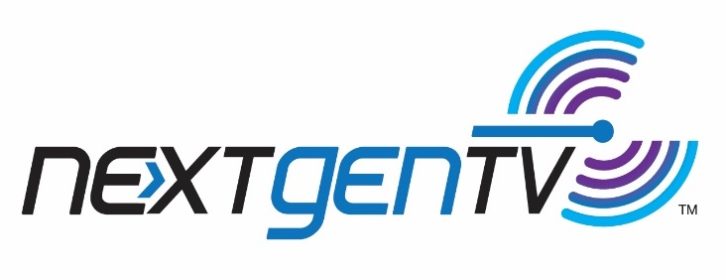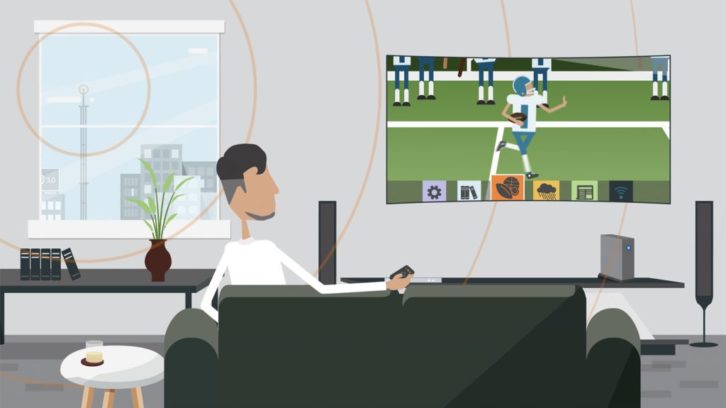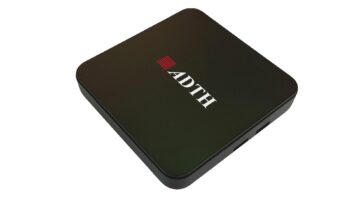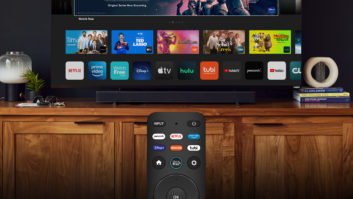
About four years ago a surprising fact about TV viewing showed up in a number of consumer surveys conducted by Magid, a leading television research firm, and commissioned by PearlTV (a consortium of U.S. broadcast companies exploring and investing in innovation focused on promoting local broadcast TV content and developing digital media and wireless platforms). Consumers were equating audio quality features on par with picture quality as a reason to buy a new TV.
Specifically, a NEXTGEN TV – TVs manufactured by Samsung, LG and Sony (and soon many more makers) that include the latest new broadcast transmission standard (ATSC 3.0), and allow consumers to access free over the air enhanced content along with content provided over the internet.
The data that equated audio with video as a purchase decision driver was startling enough that I asked to meet with the best sound experts in the world and the inventors of the new audio codec that is part of the NEXTGEN TV: Dolby Laboratories’ Craig Todd, Dolby Fellow and former Chief Technology Officer; Tim Carroll, Senior Director, Sound Technology; and Chief Scientist Poppy Crum, who is also an Adjunct Professor at Stanford University. In spending time with them, I began to fully appreciate the enormous impact audio has on our emotions. The most overlooked factor driving a new TV purchase decision has come to light. And it is sound.
The Sound Revolution Will Be Televised
 Audio is a large part of how much we engage in and enjoy an entertainment, educational, or social viewing experience. Due to the past 12 months – where our TVs served as our primary conduit for all of those things – we are all now highly attuned to the value of investing in the best possible viewing and listening option available for the largest screen in our homes.
Audio is a large part of how much we engage in and enjoy an entertainment, educational, or social viewing experience. Due to the past 12 months – where our TVs served as our primary conduit for all of those things – we are all now highly attuned to the value of investing in the best possible viewing and listening option available for the largest screen in our homes.
It’s worth asking why providing superior sound quality wasn’t table stakes for the collective broadcast and TV manufacturing ecosystem. Why weren’t we more upfront about the inconsistent quality and understanding of sound features in mass market TVs? Why did consumers feel a better sound experience required considerable additional investment of time, money, space, and technology in things like bulky, expensive speakers and complicated layouts, and difficult TV UIs and terms to navigate audio controls? Why should it be considered a “superior” sound experience when consumers could feel like they were having an in-theater experience in-home, actually understand all the dialogue, and maybe didn’t have to remain on alert to dive for the remote to change the volume between TV shows or channels just from their regular TV?
It shouldn’t take anything extra or expensive to deliver a quality audio experience. But the TV and broadcast industry is much like any other, picture quality as the sole deciding factor is a hard story to change, and providing new messaging and easy to understand access to controls would require investment from manufacturers and broadcasters.
We needed to deliver solid quantitative proof that great audio was a market force demand that couldn’t be ignored; that consumers were starting to base TV purchasing decisions on the quality of audio delivery.
The Sound of Science
During my first visit to Dolby Laboratories in June of 2018 Poppy took me into their sensory immersion lab where she could digitally control the echo response of the room to be near anechoic (without any reverberation) all the way to a large concert hall to show me firsthand the effects of even seemingly slight differences in sound on a person. In her Ted Talk, Poppy shows the science behind the value of Voice +, a Dolby feature in NEXTGENTVs that enhances dialogue so the listener can better follow the story, without turning the volume up.

In her experiment, Poppy explains that pupil dilation accurately measures how “hard” the brain is working at processing something, “Your pupil doesn’t lie. When your brain’s having to work harder, your autonomic nervous system drives your pupil to dilate.” If you watch the Ted Talk you’ll see Poppy play two sounds while the audience watches a tape of a listener’s pupil. The first sound is two voices saying the same sentence at the same time, only very slightly out of sync. The second sound is a single voice saying the same sentence. Poppy explains to the audience what they’re seeing, “The eye responds to how hard the brain is working. It has nothing to do with lighting – it has to do with voices. The harder to understand voices (the two voices overlapping) makes your brain work harder to understand what it is hearing.”
That science experience explains why consumers in our focus groups rated dialogue enhancement their favorite of all audio enhanced options in a NEXTGEN TV set. It makes sense: we watch TV primarily to relax or gain information – the extra cognitive load of struggling to understand what we’re hearing turns us from a relaxation mode to reactive mode.
Based on Poppy’s suggestions we set up an experiment with real-feel focus groups where people were invited into a living room setting to watch a live sporting event on NEXTGEN TVs with Dolby sound features in November of 2018. Participants were given equal amounts of information about the video and audio controls that they could adjust according to different scenarios. Visual options included 4K + HDR; audio enhancements included Enhanced Dialogue (the Voice+ feature described earlier); Immersive sound; Consistent Loudness; Custom Audio Tracks; and Multi-Language settings.
Consumers who described themselves as always or frequently using closed captions to understand dialogue said they considered Voice+ reason enough to buy a new NEXTGEN TV. Immersive sound was the second most favorited feature after dialogue enhancement along with consistent loudness across programs and channels.
One of the most striking survey responses was an almost uniform refusal of all participants to pick a single factor that would drive a NEXTGEN TV purchase decision. Almost all of them wrote extra about the value of Dolby sound options, citing those as a strongly compelling reason to purchase an entirely new NEXTGEN TV (rather than an extra device or accessory designed to improve sound).
The Science of Sound
The human brain is so connected to sound. With Dolby Laboratories’ suggestions and support PearlTV’s tests quantitatively proved that enhanced audio is a feature consumers want and upon which they would base future purchase decisions. Later this summer we’ll launch marketing that taps into the market force of the audio advantage, increasing consumer awareness of the power a NEXTGEN TV with Dolby audio system has to make their viewing experiences more enjoyable.
Consumers are telling us what they want to hear. We are hearing them loud and clear. Now they can hear us too.
Anne Schelle (@apschelle) is managing director of the Pearl TV business group of broadcasters, with a membership of nine companies that operate more than 750 local TV stations across the country. Pearl TV is leading the transition from HDTV to NEXTGEN TV, powered by the ATSC 3.0 broadcast TV standard.
See also: The Well-Trained Retail Sales Associate: Now More Than Ever













